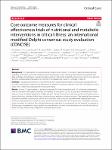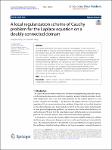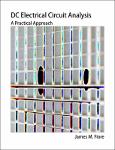Search
Author
- Osman, Ahmed I. (5)
- Daqing, Ma (3)
- Jorgensen, Ed (3)
- Li, Yan (3)
- next >
Subject
- kinh tế (26)
- Economics (12)
- programming (10)
- XRD (10)
- next >
Date issued
- 2020 - 2025 (2128)
- 2010 - 2019 (129)
- 2000 - 2009 (9)
- 1999 - 1999 (1)
Has File(s)
Search Results
The liberalization of electricity markets has been dominated by conditions of oligopoly and market power, as shown in numerous studies in empirical literature on the supply side. However, regulators have used statistical measurements to monitor the extent of market power, making little reference to founded theoretical approaches. This paper provides a new contribution to the literature on the electricity market by presenting a theoretical and empirical model to construct competitive equilibrium, and estimating market power on both the supply and demand side of the day-ahead electricity market. |
This openly licensed text, created with students, approaches contemporary families from an equity lens. It asks two questions relevant to the Difference, Power, and Discrimination outcomes at Linn-Benton Community College and Oregon State University: “What do families need?” and “How do society and institutions support or get in the way of families getting what they need?" Original content is licensed under CC BY, except as otherwise noted. More specific information can be found under Licenses and Attributions at the bottom of each section. |
Anything that can be automated, will be. The “magic” that digital technology has brought us — self-driving cars, Bitcoin, high frequency trading, internet of things, social networking, mass surveillance, the 2009 housing bubble — has not been considered ideologically. The Critique of Digital Capitalism identifies how digital technology has captured contemporary society in a reification of capitalist priorities. The theory proposed in this book is the description of how digital capitalism as an ideologically “invisible” framework is realized in technology. Written as a series of articles between 2003 and 2015, it provides a broad critical scope for understanding the inherent demands of capitalist protocols for expansion without constraint (regardless of social, legal or ethical limit... |
For the precision calculations in perturbative Quantum Chromodynamics (QCD) gigantic expressions (several GB in size) in terms of highly complicated divergent multi-loop Feynman integrals have to be calculated analytically to compact expressions in terms of special functions and constants. In this article we derive new symbolic tools to gain large-scale computer understanding in QCD. Here we exploit the fact that hypergeometric structures in single and multiscale Feynman integrals emerge in a wide class of topologies. Using integration-by-parts relations, associated master or scalar integrals have to be calculated. For this purpose it appears useful to devise an automated method which recognizes the respective (partial) differential equations related to the corresponding higher tran... |
Clinical research on nutritional and metabolic interventions in critically ill patients is heterogenous regarding time points, outcomes and measurement instruments used, impeding intervention development and data syntheses, and ultimately worsening clinical outcomes. We aimed to identify and develop a set of core outcome domains and associated measurement instruments to include in all research in critically ill patients. |
The super-Jack polynomials, introduced by Kerov, Okounkov and Olshanski, are polynomials in n+m
variables, which reduce to the Jack polynomials when n=0 or m=0 and provide joint eigenfunctions of the quantum integrals of the deformed trigonometric Calogero–Moser–Sutherland system. We prove that the super-Jack polynomials are orthogonal with respect to a bilinear form of the form (p,q)↦(Lpq)(0), with Lp
quantum integrals of the deformed rational Calogero–Moser–Sutherland system. In addition, we provide a new proof of the Lassalle–Nekrasov correspondence between deformed trigonometric and rational harmonic Calogero–Moser–Sutherland systems and infer orthogonality of super-Hermite polynomials, which provide joint eigenfunctions of the latter system. |
To solve the problem of ambiguous attribute selection in existing decision tree classification algorithms, a decision tree construction method based on information entropy, PCMIgr, is proposed. PCMIgr is a heuristic method based on greedy strategy. At each decision tree node, when it is necessary to select classification attributes for division, the attribute with the highest information gain ratio is selected. The main innovation of this method is that the attribute selection in the traditional classification method based on decision tree is optimized, and the classification efficiency of the constructed decision tree is improved compared with that before optimization. |
The Cauchy problem of the Laplace equation is investigated for both exact and perturbed data on a doubly connected domain, i.e., the numerical reconstruction of the function value and the normal derivative value on a part of the boundary from the knowledge of exact or noisy Cauchy data on the remaining and accessible boundary, which is completely different from the Cauchy problem on a simply connected bounded region. |
This text is based on the earlier Workbook for DC Electrical Circuits, which it replaces. The original expository text has been greatly expanded and includes many examples along with computer simulations. For the convenience of those who used the Workbook, many of the problem sets are the same, with some re-ordering depending on the chapter. |
We study hyperelliptic curves y2=f(x) over local fields of odd residue characteristic. We introduce the notion of a “cluster picture” associated to the curve, that describes the p-adic distances between the roots of f(x), and show that this elementary combinatorial object encodes the curve’s Galois representation, conductor, whether the curve is semistable, and if so, the special fibre of its minimal regular model, the discriminant of its minimal Weierstrass equation and other invariants. |










